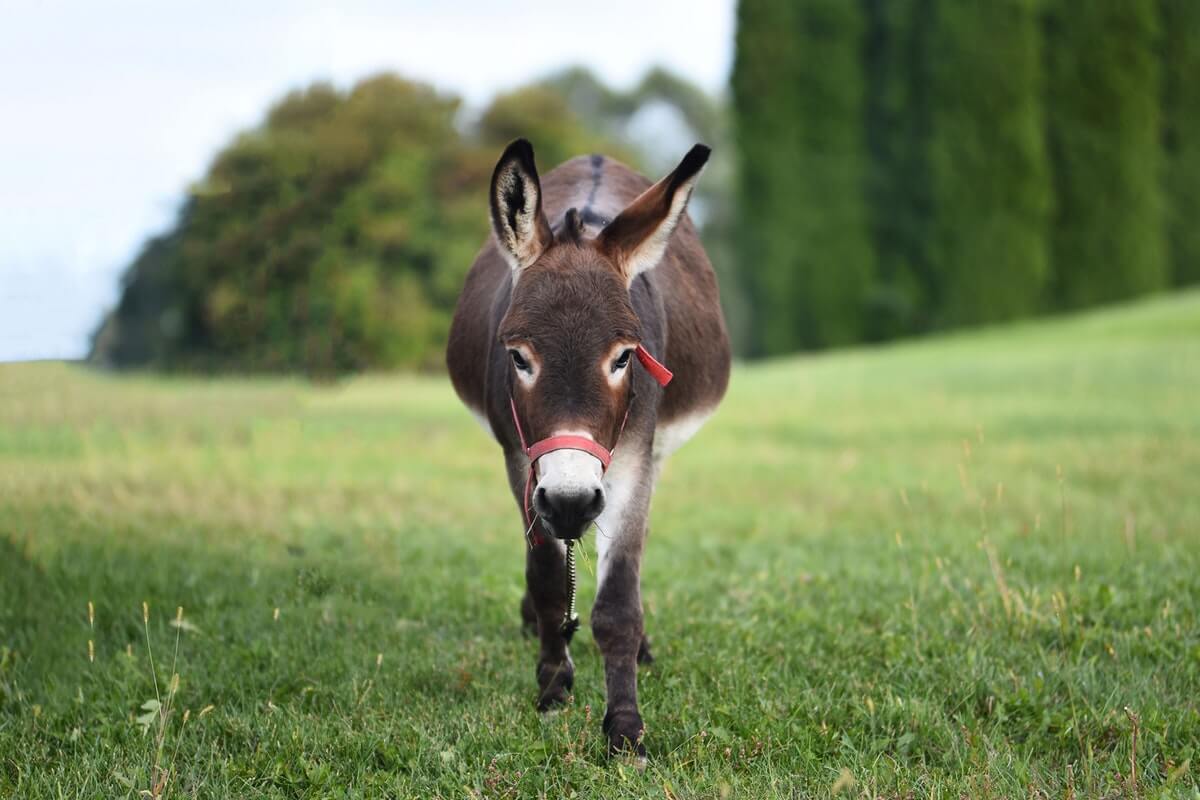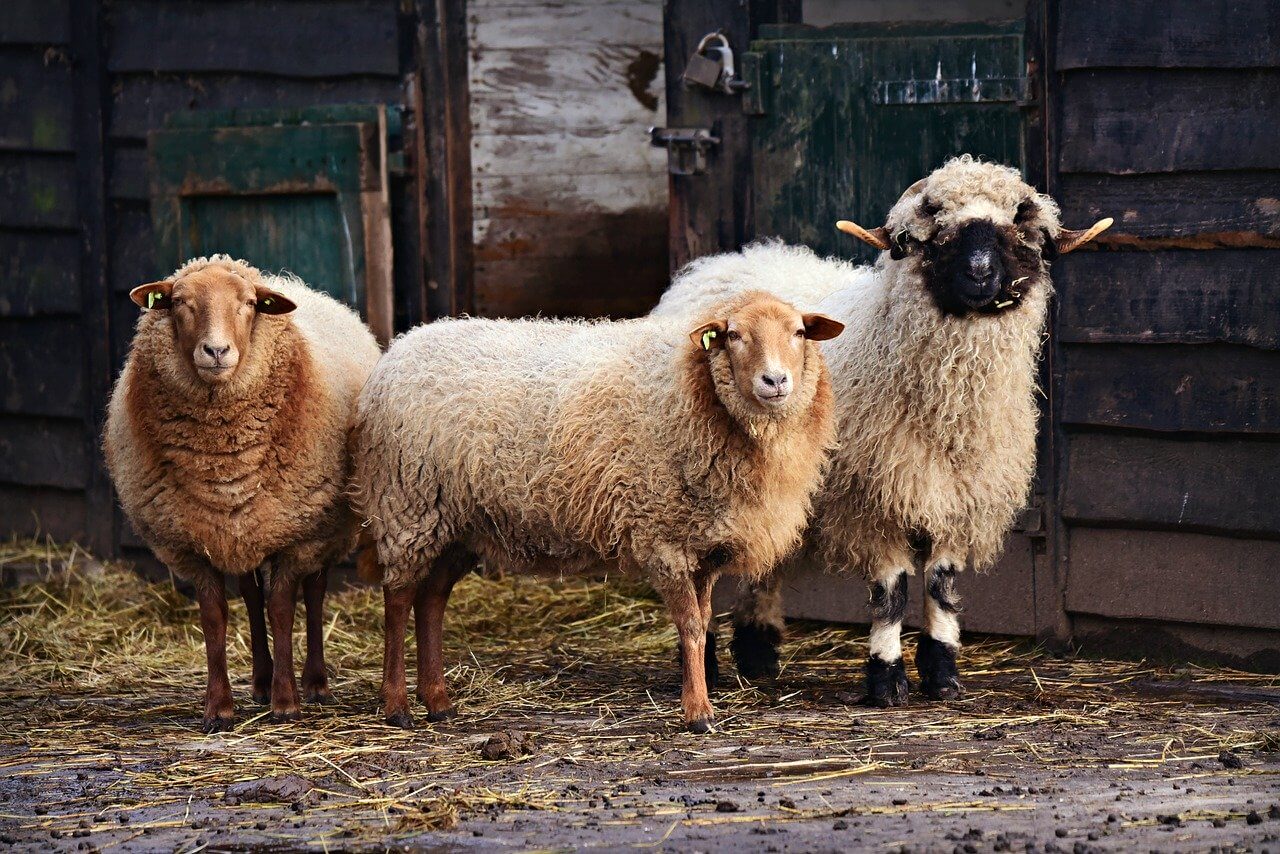Are you interested in learning how to start a farm animal sanctuary? You’ve come to the right place. This is a noble, rewarding endeavor and we will walk you through all the steps and costs associated with getting started. Read on to learn more on how to start an animal rescue farm.
What You'll Learn Today
What is a Farm Animal Sanctuary?

A farm animal sanctuary is a specific type of animal rescue or sanctuary that specializes in farm animals such as:
- Chickens
- Goats
- Donkeys
- Ducks
- Geese
- Cows
- Horses
- Pigs
- Sheep
- Llamas
- Alpacas
Start a farm animal sanctuary and your job will be to provide these animals with the care and attention they need. You’ll be responsible for day-to-day management such as feeding and administering medication.
Here is a video that explains all of the tasks you might expect to complete during the average day on a farm animal sanctuary.
Farm animals may arrive at a sanctuary after being surrendered by their owners for a variety of reasons, such as abuse or neglect or just an inability to care for them any longer. Some farm animals at a sanctuary may have special needs or health conditions too.
How Do I Start My Own Animal Sanctuary?
Before you start your own farm animal sanctuary, it’s a good idea to get some experience. Take the time to visit and volunteer at a sanctuary near you.
You can find a list of animal sanctuaries here. Most are open to volunteers and will answer any questions you have.
Next, come up with a clear plan. Ask yourself questions such as:
- What kinds of farm animals will I shelter, and how many?
- Where will they be housed?
- Who will care for the animals (bearing in mind that animals require 24/7, 365-days-a-year care)?
- What will it cost to raise these animals?
Be realistic about how many animals you can actually handle, keeping in mind your lifestyle, budget, and scheduling limitations.
You’ll next need to secure the land and proper zoning. Zoning laws regulate how land is used and how many (or what type) of animals are allowed. If your land is agriculturally zoned, you should be able to house just about any kind of animal, with the exception of exotic animals. Contact your city or county office for more information on this.
When you’re thinking about how you’re going to secure the land, try to buy instead of lease. Leasing offers zero stability and puts you in a tough position should the lease expire.
You’ll also need shelter along with outbuildings for your animals. The extent of what you need to build or buy will vary depending on what kind of animals you raise.
Other expenses and items on your to-do list to consider include:
- Food
- Veterinary care and supplies (like medications and vaccinations)
- Legal fees
- Insurance
If you plan on acquiring tax-exempt nonprofits status, you will need to file forms with the IRS and incorporate as a nonprofit before you do so. You may want to have a professional like an accountant or attorney help you with the paperwork.
There are other things you may have to account for, too. For instance, if you keep any dogs, you’ll need a kennel license, while other places have specific regulations on keeping other tips of animals (like birds).
How Much Does it Cost to Build an Animal Sanctuary?

Before you start your animal sanctuary, it’s a good idea to sit down and write out a clear financial plan that details:
- The type and number of animals you will care for
- Housing facilities that need to be built, maintained, or renovated
- Costs to feed and house the animals
- Medical costs
- Cost of employee salaries and insurance
- Other miscellaneous expenses (legal fees, advertising, vehicles, etc)
You should plan on fundraising for two basic areas – operating expenses (the day-to-day expenses) and capital expenses (for fixed assets like buildings and vehicles).
Here’s a quick breakdown of estimated expenses – again, expect these to vary depending on the type of animals you are rescuing and where you live.
- Purchase of property and building/facility construction: $40,000+
- Utilities and other amenities: $30,000+
- Animal care expenses (note that these will be ongoing): $10,000+
- Legal fees and filing expenses: $5,000+
All in all, you should expect to spend at least $85,000 as you are figuring out how to start an animal rescue farm from the ground up.
How to Start an Animal Rescue Farm: Paying for Your Animal Sanctuary
One of the most important things you can do when starting a farm animal sanctuary is to get yourself registered as a tax-exempt nonprofit. This can save you a ton of money and also help you raise money for your facility.
Fundraising becomes much easier when you’re a nonprofit because donors can claim their gifts as an offset against taxes. This can increase gift amounts and frequencies. It also lends credibility to your facility and ensures proper separation between your personal finances and the business.
Give yourself plenty of time to obtain nonprofit status – it can take about three months or so and you’ll only get a three-year provisional status with the IRS. Good financial records are key!
How Do Sanctuary Farms Make Money?
Sanctuary farms tend to make a bulk of their money through fundraising and voluntary donations from visitors to the sanctuary.
Some options to help your sanctuary farm make money include:
- Starting a membership program (generally with a printed newsletter or e-newsletter to keep members informed)
- Phoning around or emailing for donations
- Direct mail campaigns
- Television or radio campaigns
- Holding special events lik benefit dinners, product sales, tabling, etc
- Asking for in-kind donations
- Facilitating adoptions (and charging adoption fees)
- Holding visits (you can charge a fee or ask for a voluntary donation)
- Offering educational programs
How Much Do Animal Rescuers Make a Year?

If you’re thinking about starting a farm animal sanctuary, chances are, you aren’t doing it for fame and fortune. However, you might be using it to replace the salary you might receive at a regular job, so it’s important to have a rough idea of how much you might make per year.
You won’t be buying a yacht any time soon, but you can expect to bring in a salary of around $32,391 per year on average, according to Ziprecruiter. It’s enough to make a living but keep in mind that you will be working long hours.
That said, the work you will be doing is incredibly rewarding and well worth your time. If you are interested in learning more about starting a farm business, here is a useful guide.
I really love having my own farm animal sanctuary, but it seems to cost quite a lot of money 🙁
Josh, start small. You can even try adopting reduced chickens from other sanctuaries like I did and raise them in your own yard. Call your cityhall and ask how many you can keep and if you can keep roosters! Roosters are in most need of homes. The cost to raise chickens is relatively inexpensive. Let me know if you have questions. I would be more than happy to help 🙂
I would love to start a farm animal sanctuary and I have the open farm land. I just don’t like the idea of having a “board of directors”. I will be doing all of the work and taking care of them. Is there any way around that or other ideas?
Hi
Good Day After cyclone Idai that up rooted trees and reshaped the area, bird are now rare and there is a need to protect those that are still alive in the area. I have acquired 4 Hectares of land and want to turn it in a bird sanctuary in Chimanimani. I am looking for ideas on how i can achieve it.
My contact whatsApp number +263772278161.
Regards
Engineer Jacob Kudzayi Mutisi
I am trying to start my own animal rescue.i have 5 acres in North ga
Where can I get paperwork t k for funding?